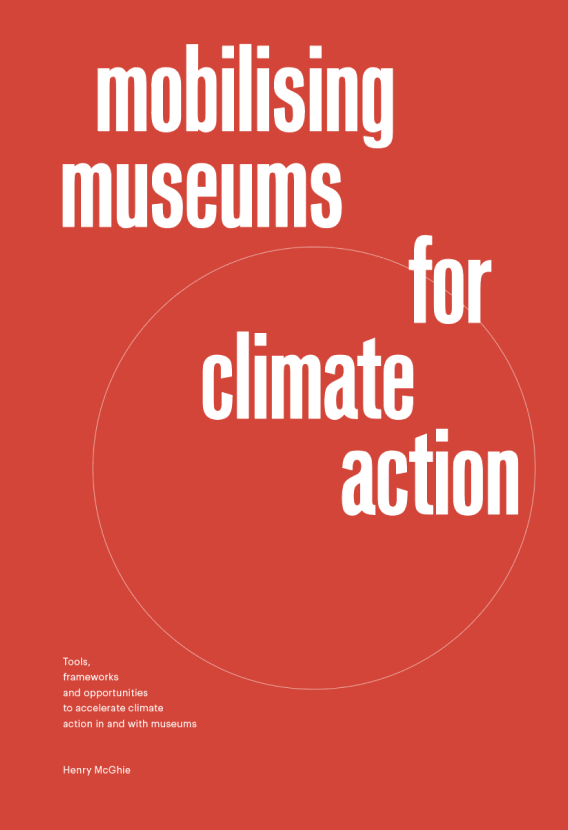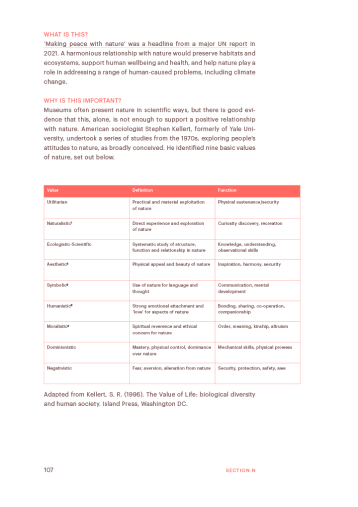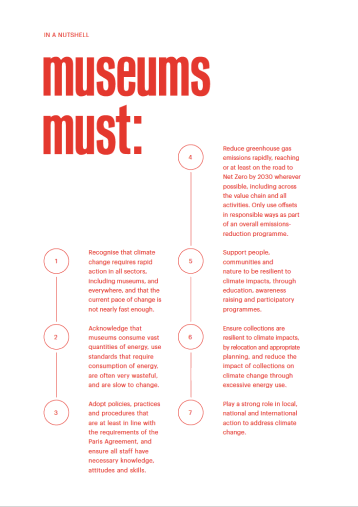Climate change and its many impacts: the need for climate action
( Toolbox )
Climate change has multiple impacts, on ecosystems, society, the economy and infrastructure. These interact and cascade to other impacts. Climate impacts vary from place to place, and impacts are experienced differently by different sectors and social groups.
The Intergovernmental Panel on Climate Change (IPCC) reviews scientific evidence that is made available to the Parties to the UNFCCC and the Paris Agreement. Other leading sources of information are the annual State of the Global Climate reports from the World Meteorological Organization, Emissions Gap reports produced by the UN Environment Programme (UNEP) and IPBES reports on the state of biodiversity.
The most recent assessment report (AR6), by the IPCC, of the Physical Science Basis of climate change (2021), included the following headline statements (among others):
- “It is unequivocal that human influence has warmed the atmosphere, ocean and land. Widespread and rapid changes in the atmosphere, ocean, cryosphere and biosphere have occurred.”
- “The scale of recent changes across the climate system as a whole and the present state of many aspects of the climate system are unprecedented over many centuries to many thousands of years.”
- “Human-induced climate change is already affecting many weather and climate extremes in every region across the globe. Evidence of observed changes in extremes such as heatwaves, heavy precipitation, droughts, and tropical cyclones, and, in particular, their attribution to human influence, has strengthened since the Fifth Assessment Report (AR5).”
- “Global surface temperature will continue to increase until at least the mid-century under all emissions scenarios considered. Global warming of 1.5°C and 2°C will be exceeded during the 21st century unless deep reductions in carbon dioxide (CO2) and other greenhouse gas emissions occur in the coming decades.”
- “Many changes in the climate system become larger in direct relation to increasing global warming. They include increases in the frequency and intensity of hot extremes, marine heatwaves, and heavy precipitation, agricultural and ecological droughts in some regions, and proportion of intense tropical cyclones, as well as reductions in Arctic sea ice, snow cover and permafrost.”
- “Continued global warming is projected to further intensify the global water cycle, including its variability, global monsoon precipitation and the severity of wet and dry events.”
- “Under scenarios with increasing CO2 emissions, the ocean and land carbon sinks are projected to be less effective at slowing the accumulation of CO2 in the atmosphere.”
- “Many changes due to past and future greenhouse gas emissions are irreversible for centuries to millennia, especially changes in the ocean, ice sheets and global sea level.”
- “From a physical science perspective, limiting human-induced global warming to a specific level requires limiting cumulative CO2 emissions, reaching at least Net Zero CO2 emissions, along with strong reductions in other greenhouse gas emissions. Strong, rapid and sustained reductions in CH4 [methane] emissions would also limit the warming effect resulting from declining aerosol pollution and would improve air quality.”
Major climate change impacts include:
- Atmospheric CO2 levels are at their highest for at least two million years.
- Rate of glacial retreat is unmatched for 2,000+ years.
- Last decade warmer than any similar period for c.125,000 years.
- Sea level rise faster than and prior century for 3,000 years.
- Summer Arctic ice coverage smallest in last 1,000 years.
- Ocean warming at its fastest since the last Ice Age.
- Ocean acidity level at its highest in 26,000 years.
The World Meteorological Organization issues a definitive ‘state of the global climate’ report annually. The 2020 Provisional Report on the State of the Global Climate Report included the following headline findings:
- Greenhouse gas emissions continued to increase, in spite of COVID-19.
- The six years 2015-20 have been the warmest six years on record. The highest ever temperature was recorded north of the Arctic Circle (38.0°C).
- The trend in sea-level rise is accelerating.
- Arctic sea-ice minimum was the second lowest on record.
- Antarctic ice-mass los accelerated around 2005.
- The 2020 North Atlantic hurricane season was exceptionally active.
- Hurricanes, extreme heatwaves, severe droughts and wildfires led to tens of billions of US dollars in economic losses, and many deaths.
- Some 9.8 million people were displaced by floods and other extreme weather impacts in the first half of 2020.
- Disruptions to the agriculture sector by COVID-19 multiplied extreme weather impacts, increasing food insecurity.
Each effect of climate change has multiple impacts or likely consequences. These were outlined by the IPCC in its fourth Assessment Report (AR4) in 2007.
| Phenomenon & direction of trend | Agriculture, forestry & ecosystems | Water resources | Human health | Industry, settlement & society |
|---|---|---|---|---|
| Over most land areas, warmer and fewer cold days and nights, warmer and more frequent hot days and nights | Increased yields in colder environments; decreased yields in warmer environments; increased insect outbreaks | Effects on water resources relying on snowmelt; effects on some water supplies | Reduced human mortality from decreased cold hazards | Reduced energy demand for heating; increased demand for cooling; declining air quality in cities; reduced disruption to transport due to snow, ice; effects on winter tourism |
| Warm spells/heat waves; frequency increases over most land areas | Reduced yields in warmer regions due to heat stress; increased danger of wildfire | Reduced yields in warmer regions due to heat stress; increased danger of wildfire | Increased water demand; water quality problems, e.g. algal blooms | Reduction in quality of life for people in warm areas without appropriate housing; impacts on the elderly, very young and poor |
| Heavy precipitation events; frequency increases over most areas | Damage to crops; soil erosion; inability to cultivate land due to water logging of soils | Damage to crops; soil erosion; inability to cultivate land due to water logging of soils | Adverse effects on quality of surface and groundwater; contamination of water supply; water scarcity may be relieved | Disruption of settlements, commerce, transport and societies due to flooding; pressures on urban and rural infrastructures; loss of property |
| Area affected by drought increases | Land degradation; lower yields/crop damage and failure; increased livestock deaths; increased risk of wildfire | More widespread water stress | Increased risk of food and water shortage; increased risk of malnutrition; increased risk of water- and foodborne diseases | Water shortage for settlements, industry and societies; reduced hydropower generation potentials; potential for population migration |
| Intense tropical cyclone activity increases | Damage to crops; wind throw (uprooting) of trees; damage to coral reefs | Power outages causing disruption of public water supply | Increased risk of deaths and injuries by drowning in floods; migrationrelated health effects | Disruption by flood and high winds; withdrawal of risk coverage in vulnerable areas by private insurers, potential for population migrations, loss of property |
| Increased incidence of extreme high sea level (excludes tsunamis) | Salinisation of irrigation water, estuaries and freshwater systems Decreased freshwater availability due to s | Decreased freshwater availability due to saltwater intrusion | Increased risk of deaths and injuries by drowning in floods; migrationrelated health effects | Costs of coastal protection versus costs of land-use relocation; potential for movement of populations and infrastructure |
Some impacts of climate change are extreme, single events, such as storms or floods. Others are called ‘slow onset events’, which take place gradually over long periods of years or decades. These include rising temperatures, desertification, loss of biodiversity, land and forest degradation, glacial retreat and related impacts, ocean acidification, sea-level rise and salinisation.
In addition to the five-yearly Assessment Reports, IPCC issues special reports dedicated to particular topics.
IPCC 1.5 Degrees Report (2018)
- On the current path of carbon dioxide emissions, temperature is expected to increase by 3 to 5 degrees Celsius by the end of century.
- 1.5˚C is possible but requires unprecedented and urgent action.
- There are clear benefits to limiting warming to 1.5°C compared to 2°C: 420 million fewer people being exposed to severe heat waves, survival of some tropical coral reefs, loss of fewer plant and animal species, and the protection of forests and wetland habitats.
- The decisions we make now will define the world we live in and for future generations.
IPCC Special Report on Climate Change and Land (2019)
- Land is a critical resource: agriculture, food production, and deforestation are major drivers of climate change.
- Keeping global warming to well below 2°C can be achieved only by reducing greenhouse gas emissions from all sectors including land and food.
IPCC Special Report on Oceans and the Cryosphere (2019)
- Earth’s oceans and frozen spaces are being hit hard by global warming.
UNEP’s annual Emissions Gap Report provides an important review of emissions and countries’ attempts to reduce emissions. The 2020 Emissions Gap Report (published in 2021) included the following headlines:
- We are currently on track for 3°C of global heating this century.
- A green economic recovery from the pandemic could cut c.25% of emissions predicted in 2030, and get close to 2°C of warming.
- The COVID-19 pandemic is a warning from nature we must act on climate change, nature loss and pollution.
- Governments have largely missed the opportunity to make the recovery a green recovery.
- Net Zero commitments from many countries need to be backed up by policies and action.
- Shipping and aviation sectors need more attention as emissions are growing.
- “Stronger action must include facilitating, encouraging and mandating changes in consumption behaviour by the private sector and individuals.”
- Combined emissions of richest 1% are more than double the combined total of the poorest 50%. High consumers will need to reduce their footprint to stay in line with Paris Agreement targets.
The 2019 Emissions Gap Report highlighted that global emissions need to fall by 7.6% year-on-year from 2020–30 to get on track to 1.5°C of global heating.
Climate change is already thought to be responsible for roughly 150,000 deaths each year.
In 2019, an international report by the Lancet Countdown declared climate change a health emergency, with “dire implications for every aspect of human life” already playing out across the globe today.
The World Health Organisation (WHO) has estimated that, between 2030 and 2050, climate change will result in 250,000 additional deaths every year: 38,000 due to heat exposure of elderly people, 48,000 from diarrhoea, 60,000 from malaria, and 95,000 for child undernourishment.
The World Health Organization issued a Special Report on Health and Climate Change in 2018
- The WHO describes the Paris Agreement as “the strongest health agreement of the century”.
- The WHO estimates tackling climate change would save at least one million lives a year, because tackling climate change would help address the negative impacts of, for example, air quality caused by burning fossil fuels.
The World Health Organization estimates that a shocking seven million people die annually as a consequence of air pollution. Many of these deaths are consequences of using fossil fuels as a source of fuel, both indoors and outdoors. Climate action could help to reduce this number significantly, by moving to fuels and practices that don’t create air pollution.
The World Health Organization (with UNDP, UNEP and UNICEF) has published a Compendium of WHO and other UN guidance on health and environment, as a practical tool including 500 actions to take, across all sectors, and including 39 key messages to communicate to the general public, to promote health and reduce environmental health risks.
The World Health Organization produces accessible factsheets on climate change and climate change impacts.
UNICEF’s Children’s Climate Risk Index reveals that approximately one billion children live in 33 countries at ‘extremely high risk’ due to the impacts of climate change. Countries most at risk are mainly in Africa, as well as South and South-east Asia, and Central America. Countries at ‘extremely high risk’ typically bear little responsibility for climate change.
In September 2021, the editors of 200 health journals issued a joint editorial: “The greatest threat to global public health is the continued failure of world leaders to keep the global temperature rise below 1·5°C and to restore nature. Urgent, society-wide changes must be made and will lead to a fairer and healthier world. We, as editors of health journals, call for governments and other leaders to act, marking 2021 as the year that the world finally changes course.”
Climate action makes economic sense, as set out in the New Climate Economy report (2018)
- Bold climate action could deliver US$26 trillion in economic benefits.
- Switching to a clean economy could lead to over 65 million new low-carbon jobs, higher global GDP growth, increase in female employment, and 700,000 fewer air pollution-related deaths. It also could raise $2.8 trillion in carbon price revenues and fossil fuel subsidy savings to reinvest in public priorities.
Climate change is already driving a major redistribution of plants and animals, with serious consequences both for people and for nature.
Climate change is recognised as one of five major drivers of biodiversity loss, interacting with the other four: habitat change, pollution, invasive species and over-consumption. Action to address one can, and should, also address the other four drivers.
The vision of the Convention on Biological Diversity is that, by 2050, humanity is “living in harmony with nature”. The Global Biodiversity Outlook 5 (GBO-5), published by the UN Convention on Biological Diversity (CBD), offers “an authoritative overview of the state of nature”. Of twenty targets to conserve biodiversity between 2011-20 (the Aichi Targets), 14 were not achieved, and the remaining six were only partially achieved.
The Global Environmental Outlook (GEO), produced by the UN Environment Programme (UNEP) is an invaluable source of information. The most recent Outlook, GEO 6 (2019) “calls on decision makers to take immediate action to address pressing environmental issues to achieve the Sustainable Development Goals as well as other Internationally Agreed Environment Goals, such as the Paris Agreement.” As well as the Global Environmental Outlook report, there are regional and thematic reports, with a wealth of information on environmental conditions, risks, actions, and actions needed.
FURTHER INFORMATION ON CLIMATE CHANGE AND CLIMATE CHANGE IMPACTS
Climate change and Indigenous peoples
UN Permanent Forum for Indigenous Issues Considers Reports on Climate Change Issues LINK
Climate Change and Indigenous Peoples (2008) LINK
UN Department of Social and Economic Affairs, Indigenous Peoples, Climate Change LINK
UNFCCC, Local Communities and Indigenous Peoples Platform LINK
Climate change, women and girls
IUCN Gender and Environment Resource Centre LINK
UNFCCC, gender and climate change LINK
UN Womenwatch, Women, gender equality and climate change factsheet LINK
UNDP 2017, Overview of Linkages Between Gender and Climate Change LINK
Climate change and human migration and displacement
International Organization for Migration (IOM), Migration, Environment and Climate Change LINK
Information on how people are being displaced and relocating due to climate change impacts can be found on the Migration Data Portal LINK
Climate change and nature
International Union for the Conservation of Nature, Climate Change LINK
NASA Global Climate Change, Vital Signs of a Changing Planet LINK
UNEP World Environment Situation Room: data, information and knowledge on the environment LINK
Other sources
Our World In Data LINK
Progress with Sustainable Development Goal 13, Take Urgent Action to Combat Climate Change and its Impacts LINK
UN News, Climate and Environment LINK
Sustainable Development Goals Tracker LINK


